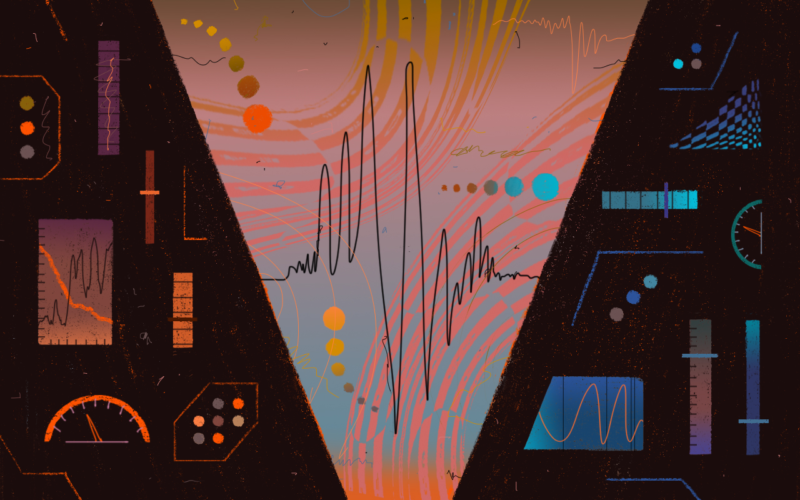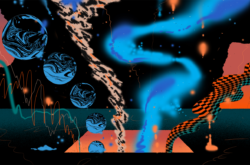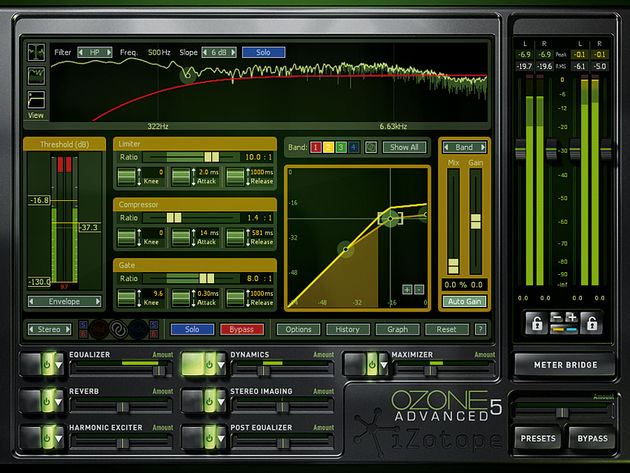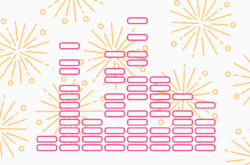Illustration: Ariel Davis
iZotope’s Ozone 8 and Neutron 2 Standard are fantastic pieces of software, but power users have clamored for their Advanced counterparts on Splice’s Rent-To-Own model as well.
If you’re already an Ozone 8 or Neutron 2 Standard user, you know how powerful these plugins are on their own. Yet, the powerful mixing and mastering suite of Ozone 8 and Neutron 2 Standard is made a lot sweeter through its Advanced counterpart’s inclusion of inter-plugin communication, streamlining engineers’ workflows and making previously tedious tasks obsolete. Here are the new features at a glance:

Still, some of these features might seem a little confusing, especially to those new to mixing and mastering their music. This article will provide a brief introduction to the new features and help budding engineers decide which option is right for them. Let’s begin by highlighting the features that are shared between both plugins as part of the Ozone 8 and Neutron 2 Advanced bundle.
iZotope recently released Ozone 9 Advanced and Neutron 3 Advanced, which offer even more powerful features — learn about Ozone 9 Advanced here and Neutron 3 Advanced here.
The Ozone 8 + Neutron 2 Advanced Bundle
The biggest difference between iZotope’s Ozone 8 / Neutron 2 Standard and Advanced versions is the brand-new Tonal Balance Control module, a revolutionary tool to visually aid you in balancing your mix. Ever wondered why your mix sounds terrible on certain systems, despite being dialed in on your normal mixing setup? Your track might be poorly balanced between frequency ranges.
iZotope have averaged together the normal frequency ranges of hundreds of tracks as an aggregated reference tool. As you play your track, Tonal Balance Control listens to the incoming audio and suggests frequency bands where your mix meets or misses the reference, visually demonstrating areas that you may want to address. Tonal Balance Control allows this by facilitating communication between all the instances of Ozone and Neutron in your mix – including EQ remote control so you can easily tweak any of Ozone and Neutron’s EQ modules individually all from the same window.
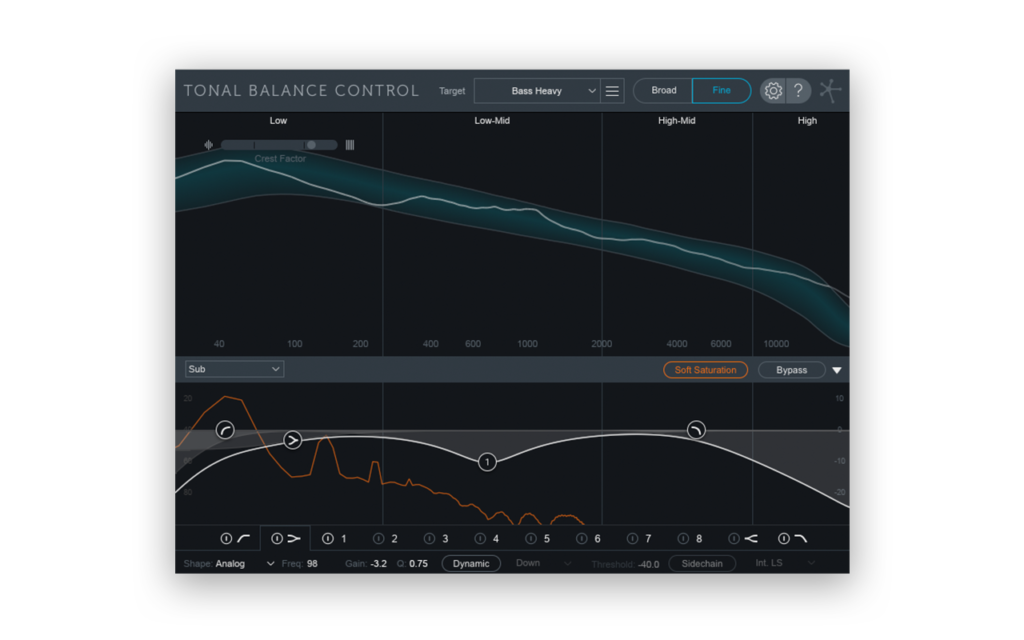
(Tonal Balance Control – Fine View – EQing sub track)
Ozone 8 / Neutron 2 Advanced’s flagship new feature also contains some small but useful details, such as the low-end crest factor meter in the top left. This handy little bar will show you how squashed your bass is – in the above example, Tonal Balance Control thinks I’ve compressed my bass just a little bit too much.
The Ozone 8 + Neutron 2 Advanced Bundle also sports the ability to instantiate any module of Ozone or Neutron as an individual plugin. Let’s say you love the sound of Ozone’s Exciter, but you’d like to use it only on your guitar. As an Ozone 8 Standard user, you could open an entire instance of Ozone and slap it on your guitar bus with the Exciter module active. This technique would work, but it doesn’t scale: running a full instance of Ozone every time you want to use one module can become prohibitively resource-intensive. With Ozone 8 Advanced, you can use the Exciter module alone to make your project far more CPU-sustainable.
Inter-plugin communication is probably the most attractive feature of Ozone 8 / Neutron 2 Advanced, but let’s dive into Ozone 8 and Neutron 2 individually to find out what’s new in their Advanced versions.
Ozone 8 Advanced
Ozone 8 Advanced boasts several beautiful new modules. The Spectral Shaper is like the lovechild of a dynamic EQ and multiband compressor, optimized to tame harshness all over the spectrum. Simply define the offending frequency range, then set the threshold, tone, and envelope sliders to treat your problematic signal.
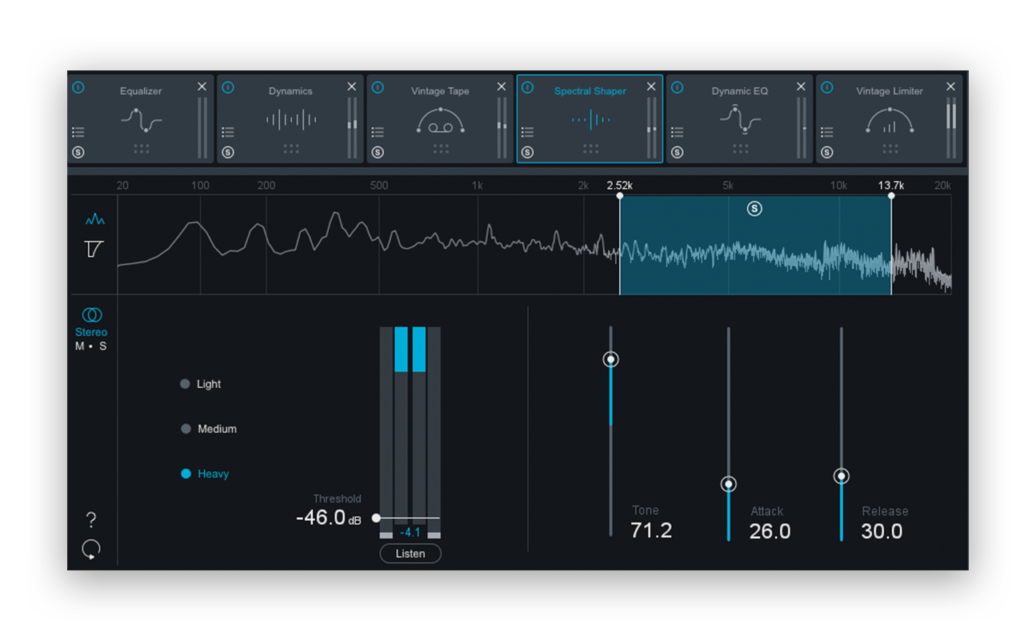
Users looking for iZotope’s vintage emulation modules will definitely want to take a long look at upgrading to Advanced, which includes an extra saturation and compression module on top of the Vintage EQ that comes with Standard. Ozone 8 Standard users who find the Dynamics module a bit surgical will love the Vintage Compressor.

The Vintage Tape module provides an extra bit of control over the module’s harmonics as compared to the Exciter. Personally, I love Ozone’s Exciter, but if you find it a bit harsh and digital, the Vintage Tape module is definitely worth checking out.
Neutron 2 Advanced
Neutron is a mixing plugin, so individual modules take a backseat to communication within plugins. That’s why Advanced features tools that rely on inter-plugin communication like Tonal Balance Control, and while Neutron 2 Advanced does offer the important ability to mix in 7.1 Surround Sound, Neutron 2 Advanced’s real showstopper is Mix Tap.
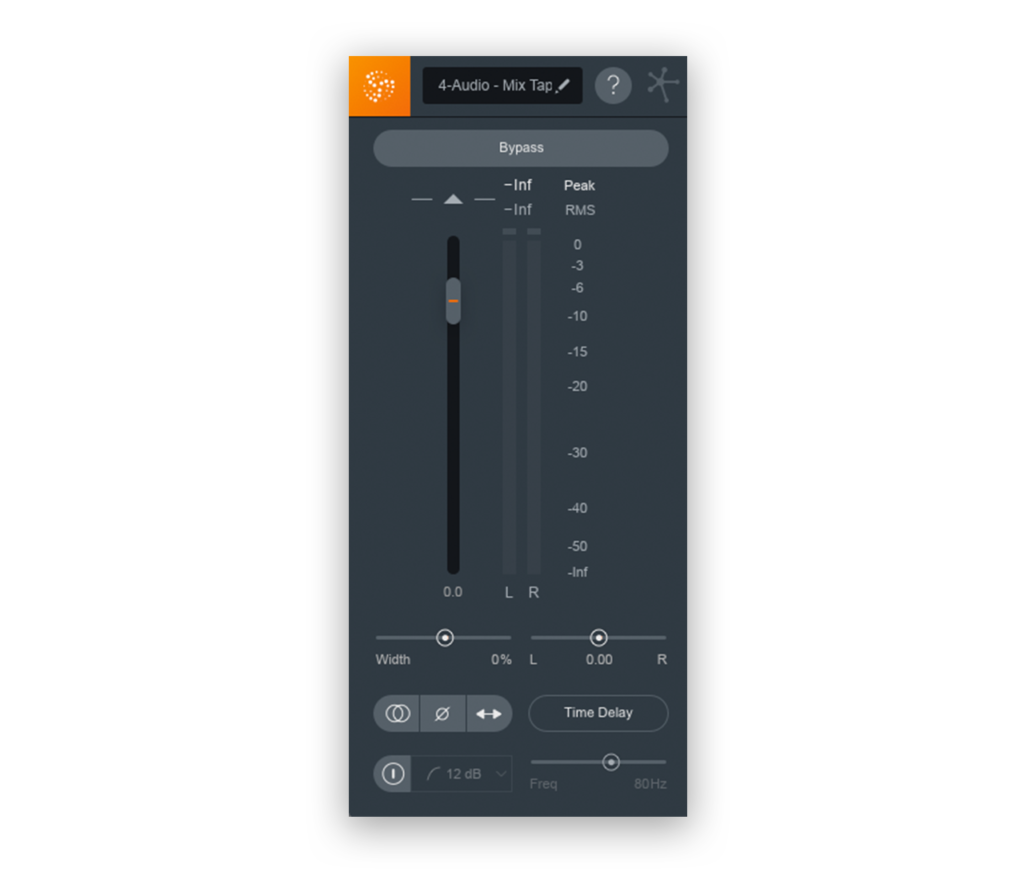
Mix Tap is a handy-dandy utility plugin that really doesn’t look like much. That, however, is the killer feature. Mix Tap will allow you to use any track with Neutron’s Visual Mixer even if you’re not running a full instance of Neutron! This is fantastic news for those of us mixing on laptops, or composing with a lot of tracks. Neutron 2 is relatively lightweight, but opening 100 instances is a tall order even for powerful studio machines. Mix Tap is perfect for channels that you’d like to use in Visual Mixer without bringing Neutron’s full processing power to bear.
It’s difficult to convey the power of inter-plugin communication through text, so I suggest you try it out yourself. Go for it with a free three-day trial of the Ozone 9 + Neutron 3 Advanced bundle!
February 9, 2018
